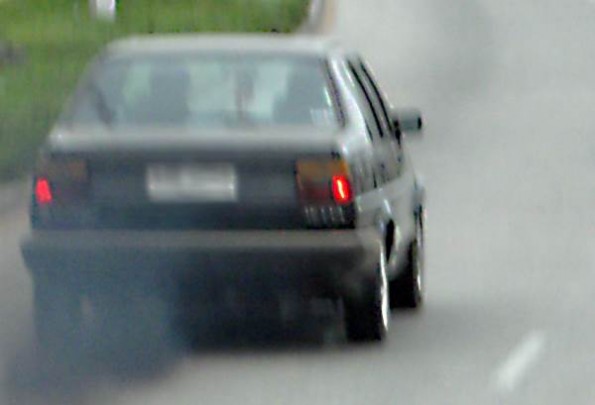
It’s illegal for vehicles to have a smoky exhaust, and if they emit a stream of smoke or vapour for more than 10 seconds the driver can be fined $150 on-the-spot.
This test is subjective by the police officer that views your vehicle. Some vehicles with two-stroke or rotary engines, older vehicles (pre-1960) and later vehicles that produce some smoke as part of their design may be allowed to produce minimal smoke. An engine maintained in original condition should be able to pass the test. A letter form the manufacturer, automobile club or appropriate expert may be required to prove that it produced a certain amount of smoke as a new vehicle.
Members of the public can report vehicles by calling *555.
WoF exhaust emissions tests
Warrant of Fitness inspections now have an exhaust emissions test. If your vehicle fails the test then you will need to have it fixed before you can get a WoF.
How to fix a smoky vehicle
Petrol-powered vehicles
Black or grey smoke is caused by incomplete fuel combustion which can be caused by:
- clogged air filter
- ignition timing wrong
- manifold blocked
- choke, fuel injection, carburettor or emission systems are incorrect or malfunctioning
Blue smoke is caused by engine oil being burned and can be caused by:
- engine wear in the cylinders, rings or pistons; valves, guides and seals
- engine oil level is too high
- turbo pressure seal failure
Diesel-powered vehicles
Diesel-powered vehicles often produce more visible smoke, but a well-maintained engine shouldn’t produce an undue level of smoke.
Black or grey smoke is caused by incomplete fuel combustion, which can be caused by:
- faulty injection system
- overheating engine
- incorrect timing
- clogged air filter
White smoke is caused by fuel not burning, which can be caused by:
- low compression
- incorrect timing
- faulty injection system
Blue smoke is caused by engine oil being burned, which can be caused by:
- oil level too high
- engine wear in the pistons, ring, cylinders, valves, guides or seals.
